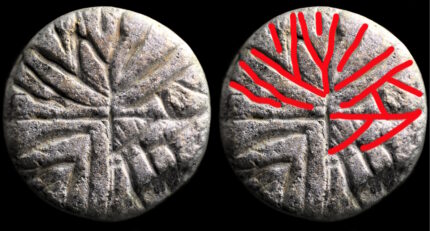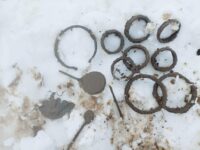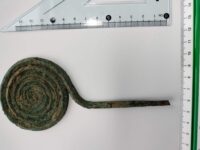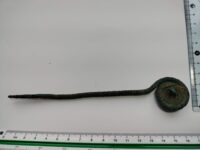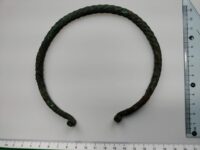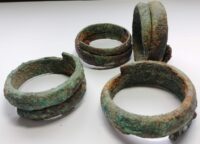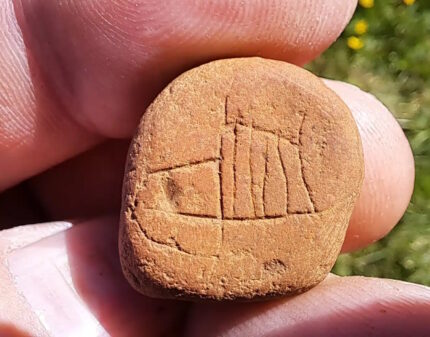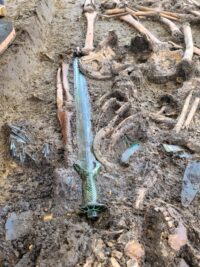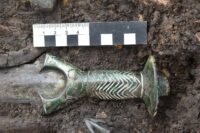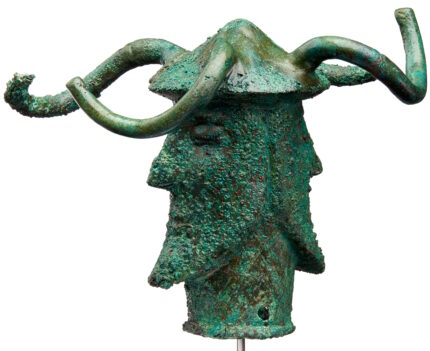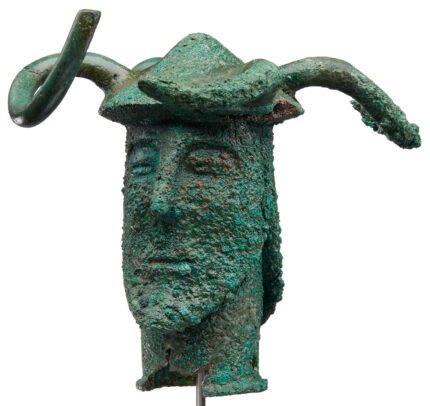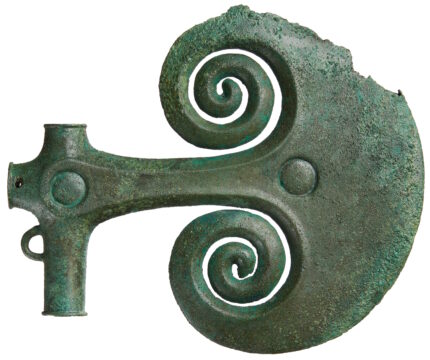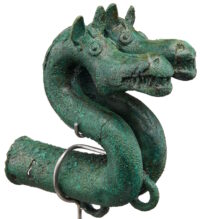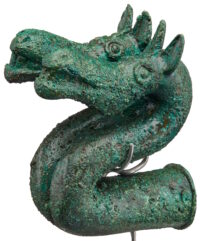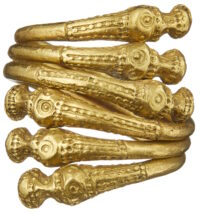A round soapstone game piece discovered in an archaeological survey in advance of sewer pipe repair in Trondheim, Norway, is inscribed with runes. This is only the second known game piece with a runic inscription ever discovered in Norway.
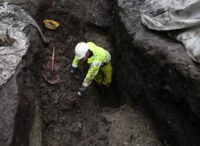 The excavation uncovered a sunken pit with archaeological layers dating to the Middle Ages. The deepest part of the pit, more than 12 feet below today’s street surface, has been dated to between 1000 and 1150 A.D. A coal layer above it was only slightly more recent, dating to 1030-1180 A.D. The soapstone game piece was found between the two layers.
The excavation uncovered a sunken pit with archaeological layers dating to the Middle Ages. The deepest part of the pit, more than 12 feet below today’s street surface, has been dated to between 1000 and 1150 A.D. A coal layer above it was only slightly more recent, dating to 1030-1180 A.D. The soapstone game piece was found between the two layers.
Archaeologists first thought the lines incised on the round piece’s surface could be stylized floral motifs, but the geometry was also reminiscent of runic inscriptions albeit laid out in artistic fashion.
The team sent high-resolution images of the piece to runologist Karen Langsholt Holmqvist. She was so intrigued she was compelled to view the object in person. That’s when she conclusively identified the decoration as runic writing.
“When you first look at the playing piece, it may look as if it only has a slightly uneven geometric pattern, perhaps a snow crystal. But when I examined the piece more closely, I saw that the lines were not random patterns, but a carefully planned runic inscription. As the inscription follows the curvature of the playing piece, the inscription is a bit odd and strange, but there is no doubt that these are runes.
“And in the microscope I also discovered that there are guide lines drawn, so there is no doubt that the runic maker has planned well to make the inscription follow the round shape of the piece. There are fields on the playing piece that do not have runic inscriptions, and here the shaker has filled the void with a pattern,” Holmqvist continues.
The runes read “siggsifr.” This is likely a name, which is common in runic inscription on small objects like the game piece. “Sig,” meaning “struggle” in Norse, is a name prefix for both male and female names. The “r” at the end indicates this was a male name. “Sifr” is a poetical metaphor meaning “brother,” so perhaps this name meant “brother in arms.” The name could refer to the person who owned the game piece or the person who inscribed it. It could also be an oblique reference to the piece itself, the name of the role it plays, like the equivalent of a knight or a bishop in chess.
